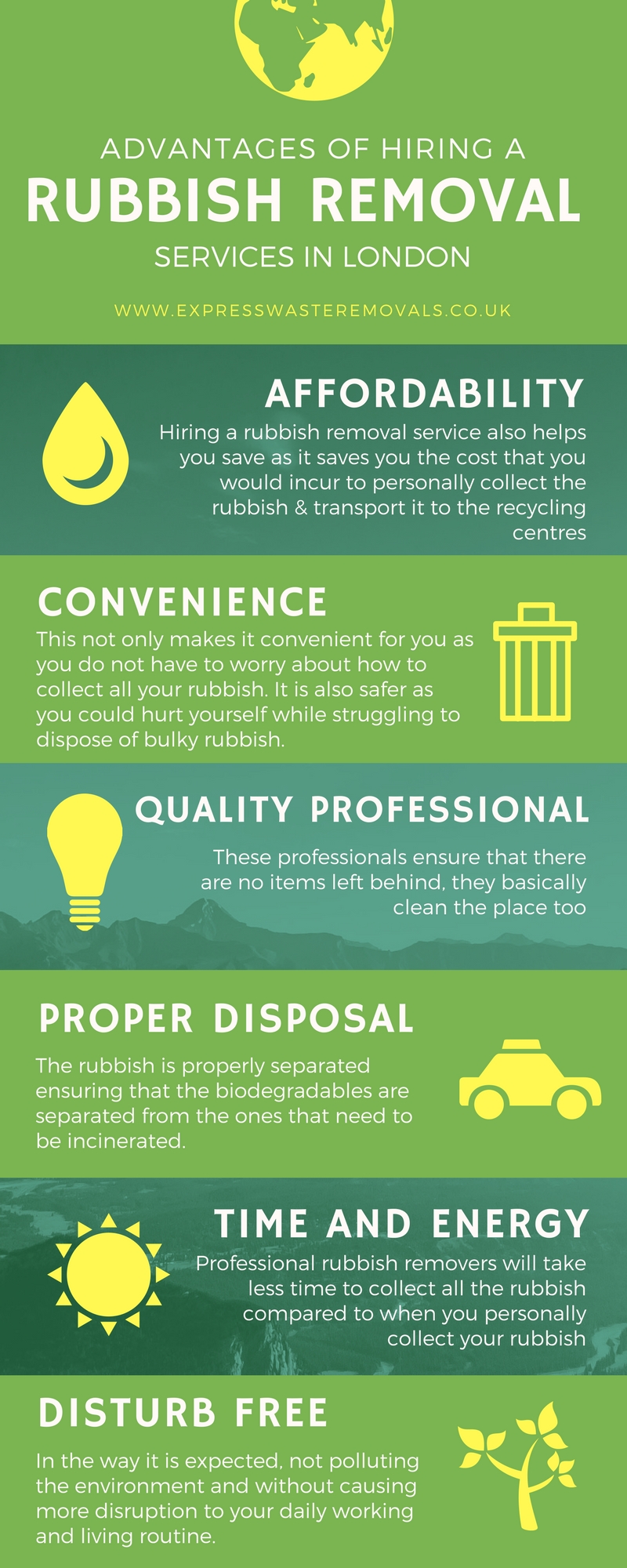The Ultimate Guide To Choosing The Appropriate Dumpster Size For Your Job
The Ultimate Guide To Choosing The Appropriate Dumpster Size For Your Job
Blog Article
Content Create By-Romero York
When embarking on a job that needs a dumpster, the size you choose can greatly influence its efficiency and cost-effectiveness. Picture having the perfect container that suits all your waste without being exceedingly big or as well small. All of it beginnings with recognizing the nuances of your project and choosing a dumpster size that aligns with your specific demands. So, before you decide, think about the factors at play to guarantee a smooth waste administration process throughout.
Factors to Consider
When deciding on the ideal dumpster dimension, there are several crucial aspects to consider.
First, consider the type of waste you'll be dealing with. Different materials might call for differing quantities of space, so comprehending what you'll be putting in the dumpster is essential.
Next off, examine the amount of waste you anticipate to create. If you take too lightly the volume, you may need to make several trips to deal with every little thing, which can be bothersome and pricey. On the other hand, leasing a dumpster that's as well large can result in unnecessary expenditures.
In addition, consider the room where the dumpster will certainly be put. Guarantee there's enough space for the dumpster to be delivered and picked up without any obstructions.
Finally, think about any kind of weight limitations that may use. Surpassing the weight limitation can lead to extra costs and even the rejection of service.
Dumpster Size Choices
For selecting the right dumpster dimension, it's necessary to have a mutual understanding of the readily available options. Dumpster sizes commonly vary from 10 to 40 cubic yards, with variants in between.
A 10-yard dumpster appropriates for little tasks like a garage cleanout or a little restoration. If you're taking on a medium-sized project such as a cooking area remodel or a basement cleanout, a 20-yard dumpster might be the appropriate choice.
For larger projects like a whole-house restoration or industrial building, a 30 or 40-yard dumpster could be preferable to accommodate the quantity of waste produced.
When choosing a dumpster dimension, consider the amount and sort of particles you expect to take care of. 5 Yard Dumpster Rental Near Me to select a slightly bigger dimension if you're unclear to prevent overfilling. Bear in mind, it's even more cost-efficient to rent out a dumpster that fits your demands rather than having to buy an added one.
Matching Size to Task
Ideally matching the dumpster dimension to your job is essential for efficient waste monitoring. To identify the appropriate size, take into consideration the extent and nature of your project.
For little home cleanouts or restorations, a 10-yard dumpster might suffice. These are usually 12 feet long and can hold about 4 pickup truck lots of waste.
For larger tasks like redesigning multiple areas or removing a big estate, a 20-yard dumpster may be preferable. These are around 22 feet long and can hold roughly 8 pickup truck lots.
If you're tackling a significant building task or industrial restoration, a 30-yard dumpster could be the most effective fit. These dumpsters have to do with 22 feet long and can suit regarding 12 pickup truck lots of particles.
Matching the dumpster size to your job ensures you have enough area for all waste materials without overpaying for extra capability.
Conclusion
In conclusion, picking the ideal dumpster dimension for your task is essential for effective garbage disposal. By considering elements like the kind and quantity of waste, room accessibility, weight restrictions, and budget plan restraints, you can ensure you have the ideal size dumpster for your needs. See to https://articlescad.com/essential-considerations-to-remember-when-renting-a-dumpster-447674.html to match the size of the dumpster to the extent and nature of your project to stay clear of overspending on unneeded expenses.
